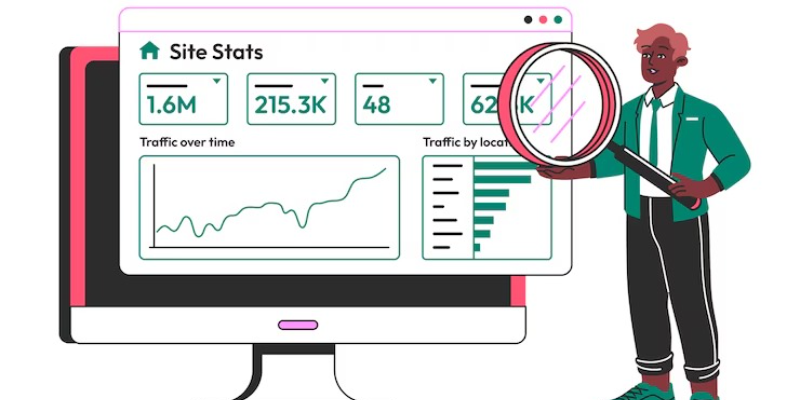

Google Ads offers the most different types of advertisements that are ideal for E-commerce businesses. These ads may attract traffic to your ads, raise the conversion rates, and eventually convert into sales. Below are some of the most famous ad formats on Google through which benefits come directly to
E-commerce businesses:
Google search ads are best for capturing demand from users actively searching for your products or services. These are text ads that appear in the SERP of Google. In Google search ads, you bid on specific keywords, and your ad is displayed when a user searches for those terms. They are nearly instant in front of users with high purchase intent. These include advertisements at the top or bottom of a search result. Suppose a user searches for "buy summer dresses online"; your ad for summer dresses will appear at the top of the results.
Shopping ads are product ads that are available with an image, the product name, the price, and the store name. These ads appear on Google Search as well as the Google Shopping tab. These have recently become visible in the Shopping tab and SERPs.
But before using shopping ads, you have to first set up a Google Merchant Center account and then link it with your Google Ads account. Then, your product listings from the Merchant Center come in handy in producing your Shopping ads. They suit perfectly businesses which contain a catalog of products to be visually presented. It is ideal for E-commerce stores with physical products.
The Google Display Network hosts millions of websites, apps, and videos where your ad may appear. With display ads, you can create different formats such as images or video ads, and target specific audiences based on interest, demographics, or retargeting. Using display ads will help remarket to users who have visited your website, and you can reach potential customers on a wide platform of websites and apps.
Remarketing ads are targeted towards users who have browsed your website or in any way interacted with the business (for example, added products to their cart, or viewed specific categories). Remarketing ads help bring back people who did not complete a purchase or took a specific action on your site.
You add a Google remarketing tag to your site, and it monitors the visitors, thus you will later be able to display targeted advertisements on the Display Network or Google Search, reminding them of your products, or even offering them discounts. Take the example of a user adding a product to the cart but not completing the transaction. Now you can target that user with a remarketing ad of the item they abandoned.
Dynamic remarketing is more sophisticated. Google automatically generates personal ads based on specific products the users have viewed or engaged with on your website. These are highly personalized ads with the exact products the user has engaged with, saving you time as they are automatically created by Google.
This is an image ad, drawing the information directly from the product catalog in Google Merchant Center. It will pull the ads that include the image descriptions and prices of the actual products that users have shown interest in.
Video ads are shown on YouTube or across websites that display Google video ads. The ad copy and the storytelling should be strong in video ads. They can be skippable or non-skippable and are ideal for brand awareness and driving traffic. Video ads help in building brand awareness, launching new products, or promoting special offers.
You can create video content that highlights your products and services, and Google places them on YouTube and partner sites based on targeting options like demographics, interests, and keywords.

Smart shopping ads are automated campaigns that combine the power of text, images, and dynamic ads. They use machine learning to show the right ad to the right user at the right time.
You upload your product feed to Google Merchant Center, and Smart Shopping ads will automatically optimize your campaigns by selecting the best products to show, choosing the best audience, and adjusting bids in real time to maximize performance.
Local Inventory Ads allow you to show users products that are available at nearby physical stores, in addition to online inventory. These ads are shown when users search for products near them. E-commerce businesses with physical retail locations or businesses that want to drive foot traffic to their store benefit from these ads. It helps drive both online and offline sales. Businesses with physical stores can link their Google Merchant Center account to their local inventory and display product availability in nearby stores, increasing local relevance and helping attract local customers who prefer to shop in person.
Discovery ads appear in Google’s feed on platforms like Gmail, YouTube, and the Google Discover feed. These ads are visually rich and often blend seamlessly with organic content. They are designed to reach users in places where they spend time and engage with content, using rich images, carousels, and a call to action. It’s part of Google’s broader push into native advertising.
Discovery ads are great for attracting new customers who haven’t yet interacted with your business. For example, an ad for your latest product collection may appear in the Google Discover feed, engaging users as they browse content related to fashion.

With Google Ads, the opportunity to reach potential customers at different stages of their journey is increased. This involves the initial stage of becoming aware of a product's conversion rates. Select the campaign type you want to focus on based on your audience and your objectives. Here are some key ways Google Ads campaigns can make sales rise for your business:
Google Ads lets you target customers directly using keyword searches. Users will search for keywords that relate to your products, and your ad can come on top of the search listing, where they are most likely to click. High-intent keywords tend to capture the users who are actively looking to buy or solve a problem, which generally boosts the chances of conversion.
Google Shopping Ads are product-based ads that contain images and prices, and store information directly in the search results and on the Google Shopping tab. What's more is that these ads are highly visual, which captures and helps make quicker decisions. The visual nature of shopping ads allows you to directly display your products toward potential customers to enable an easier evaluation and click-through to your site. If a customer types in the words "buy a red dress online”, then they will be shown hundreds of different kinds of red dresses from various retailers.
You can capture customers at every different stage of their buying cycle with Google Ads. You’ll be able to create awareness about your brand to your potential customers who probably do not know your products. With search ads and remarketing ads, you'll be able to target active researchers or even customers who have shown interest in your products before. Shopping Ads, Dynamic Remarketing, and Search Ads on product-centric keywords are focused on customers who intend to buy. Targeting customers at every stage means you reach potential buyers wherever they are: from consideration to conversion.
It adjusts bids using Google machine learning in real time through the probability of conversion. Using Smart Bidding lets Google optimize your bidding strategy, such as target CPA, target Return on Ad Spend, or maximize conversion rates to reach a cost-effective outcome. Smart Bidding provides the best possible return for your ad spend by bidding on users most likely to convert. The platform automatically handles the bidding, saving time and improving performance. With target CPA, which stands for Cost Per Acquisition, Google automatically adjusts the bids to help reach your cost-per-conversion target, optimizing ad spend and growing sales.
Ad Extensions are bits of added information that appear with your search ads, such as location, additional product details, phone numbers, reviews, or links to specific pages on your site. Ad extensions tend to enhance ad visibility and also make it more appealing compared to other competitors, giving users ample opportunities to interact with your business. This can necessarily increase click-through rates, which will eventually be converted to sales.
With Google Ads, you can create a Custom Audience from visitors to your website or engagement with content you published. But with Lookalike Audiences, it allows you to reach new users who behave the same way as your most valuable customers. You can adjust the bid strategy and concentrate the budget of the ad on those users who have a higher possible rate of conversion because these are the exact groups whom you target. You can create a Custom Audience of users who abandoned their carts and show targeted ads to them to encourage them to complete the purchase.
With YouTube Ads, you can place video ads that reach audiences interested in specific topics. It uses its current interest, demographics, and even watching behavior to target users and attract new customers. Video ads can be leveraged to promote your products or even share testimonials from your existing customers or even declare a promotion. Video ads can reach the hearts of the audience, giving you more leeway to make a greater brand recall and increase engagement and sales over the long run. For example, a YouTube ad that talks about the benefits of your product or customer success stories will compel viewers to visit your website and make a purchase.
Local Inventory Ads allow users to know when the products are available in the nearest physical stores, thus enabling you to drive business both online and offline. If you have a physical retail location or an online store offering local pickup, this feature drives traffic to your stores and helps local customers find and purchase products in your stores. A shopper looking to "buy sneakers near me" might see a Local Inventory ad with product availability in your store close by in search results, driving them into the store to make a purchase.
This campaign type works through the use of machine learning by automatically selecting which products to show potential buyers, determining the best targets for conversions, and even modifying bids in real time to maximize conversion rates. Why is that a benefit? Smart Shopping streamlines campaign management for your sake. However, manual effort is reduced while showing ads to users most likely to convert. For instance, if you own an E-commerce store that sells multiple products, Smart Shopping can automatically optimize your ads across multiple platforms like Search, Display, YouTube, and Gmail. This makes scaling with minimal effort possible.
Google Ads Conversion Tracking lets you track users' actions after clicking on your ads. These actions can include purchasing, signing up for a newsletter, or adding items to a shopping cart. It provides clear insights into whether your ads are working or not. Thus, by removing the useless parts and keeping only the ones that are working, the campaign will improve its ROI and sales. For example, if you are tracking conversions from shopping ads and see that a particular product category is converting well, then you could increase the budget or optimize your ads for that category to maximize sales.
Google Ads helps you reach a wide range of audiences with a controlled budget. Bud, a well-known PPC company in Chennai, can help you with e-commerce PPC services and can help you create successful Google Ads campaigns that improve your revenue. Reach out to us and find out how we can help you create campaigns that help achieve your business goals.